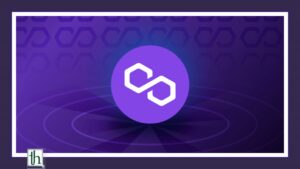Polygon is an Indian-origin cryptocurrency and blockchain startup. Before its rebranding to Polygon in February 2021, the project was known as Matic Network. Matic was founded in 2017 by 3 Indian software engineers – Jaynti Kanani, Sandeep Nailwal, and Anurag Arjun. These three engineers were active participants in the crypto space in India. Mihailo Bjelic, from Siberia, was later added as a co-founder to the project.
Matic Network is hosted on the Ethereum blockchain and actively provides solutions for the Ethereum blockchain itself. Polygon/Matic Network is a protocol and a framework for building and connecting Ethereum-compatible blockchain networks. Hence, it gets the name – “Ethereum’s Internet of Blockchains”.
Also read- Should you invest in cryptocurrencies?
What is the Polygon Matic network and the need for Polygon Matic?
Back in 2017, Ethereum faced challenges like heavy transaction fees, poor user experience, and low transaction-per-second, some of which it still faces today.
So, the main idea was to make the decentralized ecosystem more convenient and improve usability. In May 2020 nearly after 2.5 years of work, the Matic Network went live with their main-net launch. The increasing fees on the Ethereum network helped gather a lot of attention to this project. This showed an urgent need for robust scaling solutions.
Solutions by Polygon Matic Network
When it comes to scaling, there are two main ways of doing it – Layer 2 scaling and sidechains. Layer 2 scaling relies on the security of the main layer i.e. the Ethereum blockchain. Whereas, sidechains rely on their own security models usually by having a separate consensus mechanism.
Now, instead of providing just one or two solutions, Polygon provides users with an ecosystem that makes it easy to connect multiple scaling solutions. Including everything from sidechains to different consensus mechanisms to layer 2 options such as – plasma, optimistic roll-ups, and ZK rollups. But what if a new project wants to quickly build its own highly customizable solution? Well, Polygon provides a framework for this too which makes this idea feasible for them if they want to go down this road.
Success and Future of Polygon
So far, Polygon’s blockchains have been able to onboard over 80 applications, process over 5 million transactions, and secure over $200 million of user’s funds. Some great projects that are currently on the Matic POS chain or are in the process of migrating include Quickswap – a fork of Uniswap, SushiSwap, Polymarket, Polkamarket, and SuperFarm. Polygon is usually compared to big competitors and Layer 1 blockchains like PolkaDot, Cosmos, and Avalanche due to its white paper. Also, some infrastructure projects such as Chainlink (LINK) and The Graph (GRT) have also expanded to Polygon. The video gaming giant Atari has also partnered with Polygon to bring their NFTs and tokens to Layer 2.
Recently, amid the second covid-19 wave in India, a Chennai-based startup, Print2Block, has deployed a private blockchain for the government of Maharashtra to issue negative test certificates of covid-19 tests to the general population. As healthcare data is very sensitive in nature, the government had to go with a private blockchain rather than a public one. Private blockchains require a public blockchain to authenticate and validate its integrity. Print2Block has deployed a private blockchain and partnered with Polygon’s Matic Network, for audit purposes. The token behind Polygon – MATIC, was initially launched and distributed on the Binance launchpad’s Initial Exchange Offering (IEO) in April 2019 and was able to raise $ 5.6 million.
MATIC coin details: (as of 28/6/2021)
Symbol: MATIC
Current price: ₹81.2 / $1.04
Market Cap: $6.56 billion
Current circulating supply: 6.3 billion MATIC
Total supply: 10 billion MATIC
All-time high (ATH): $2.68/₹220
Volume (24h): $620 million
Final Verdict
With so much going on in the crypto space alone it will be interesting to see the future of Polygon. Jaynti Kanani, recently, when asked about his intentions with this project and its future said – “I can just say I’m building, scaling, the next future of infrastructure for banking and everything.”










